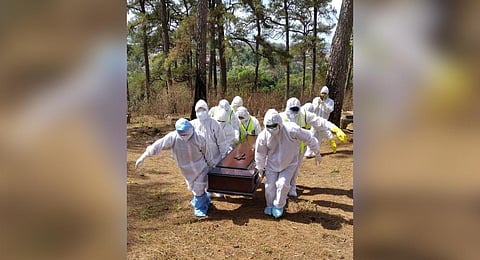

CHENNAI: After the body of Dr Simon, a neurosurgeon from Chennai who died due to COVID-19, was not allowed to be buried and all the fiasco that took place, the government is taking a host of measures to provide a dignified death to Coronavirus victims.
When a 56-year-old man died battling COVID-19 in a private hospital in Vanagaram, his body was transported all the way from Vanagaram to Tambaram, a distance of 22 kms for burial. All this was done amid high secrecy.
"The patient's residence is near Kelambakkam. We could not bury him there as the people around already knew there was a case of COVID-19 there and would again create a huge issue like in the case of Dr. Simon," said a senior health official, who overlooked the burial.
Their next option was a burial ground in Thiruverkadu, which too did not work out as there were a lot of locals around. "So, we selected a burial ground near in Tambaram. We chose a gas crematorium because the body will be burnt within minutes and we can dispose it sooner without any issue. Also, public have a misconception that the virus may spread if body is just buried. Like we planned, we barricaded the place and finished the cremation within half an hour," the official said.
Meanwhile, the wife and daughter of the victim were picked up in government vehicle to attend the funeral. They were dropped back later. Everything from the beginning to end happened in complete secrecy.
"For the next burial, we will not go to the same crematorium. This way we can avoid all the fiasco," said the official.
Another official added that similar steps for burial will be taken for further deaths till the stigma around death and burial of a COVID patient, decreases.
"The burial process ensures no issues occur. The body is first sanitised in the hospital and packed in a double layer polythene bag. Both the grave and the area around it is disinfected completely. Also, people disposing the body wear protective gear," said an official from Corporation.
WHO's guidelines also clearly mention that there is no risk after proper burial. It also says family and friends can view the body after it is prepared for burial. They should not touch/ kiss the body and properly wash hands after the viewing.